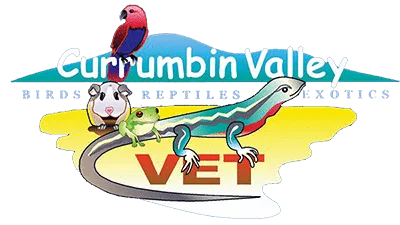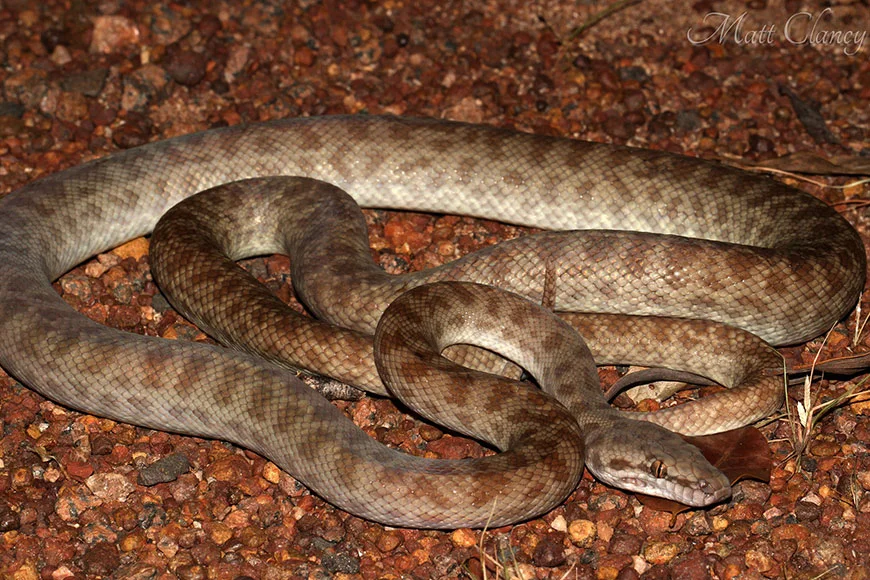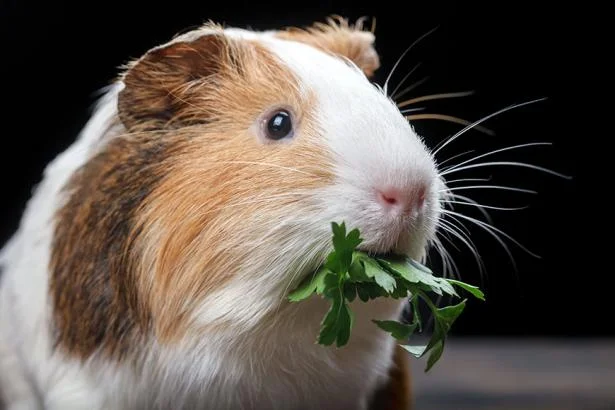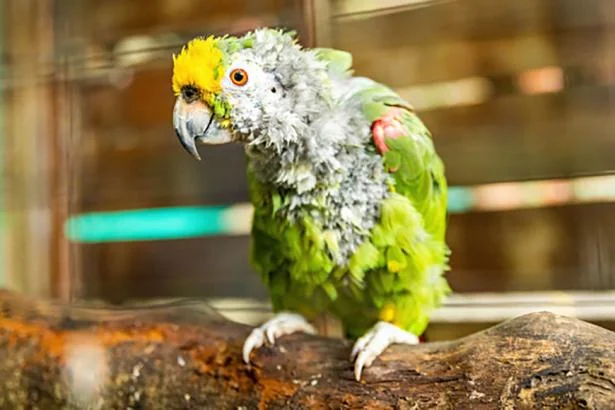Children’s pythons, scientifically known as Antaresia childreni, are a popular choice for reptile enthusiasts due to their manageable size, docile nature, and relatively straightforward care requirements – all desirable traits in pet snakes. This article will delve into the essentials of keeping these fascinating creatures as pets, focusing on the proper snake diet, habitat, and health.
Understanding Children’s Pythons
Children’s pythons are small, terrestrial snakes native to northern Australia. They are nocturnal creatures, preferring rocky outcrops, caves, and sparsely wooded areas as habitats.
With their slender bodies, pear-shaped heads, smooth scales, and irregular brown spots on a tan to grey background, these pythons are certainly among the most beautiful breeds of pet snakes. Australia is home to many beautiful reptiles, but these details have made childrens pythons a very popular pet.
With proper reptile husbandry, Children’s pythons can live up to 30 years, strengthening the bond between them and their human caregivers.
Children’s Python Habitat
The minimum terrarium size for a Children’s python should be 90cm L x 45cm W x 40cm H. This will give a juvenile python ample room to grow. It’s crucial to secure your Children’s python enclosure properly to prevent escapes. But creating a suitable habitat for your Children’s python involves more than just choosing the right enclosure.
These pythons require a temperature gradient in their enclosure to regulate their body temperature, as they are ectothermic creatures. The basking temperature should be between 32-38°C, while the other side of the enclosure should be around 24-27°C.
Use halogen flood heat bulbs for heating, not ceramic heat emitters or coloured bulbs. The enclosure should also have a clear day/night cycle with UVB lighting.
Children’s Python Humidity and Substrate
Maintain humidity levels between 20-80% by providing fresh water and a suitable substrate such as Aspen bedding. The substrate plays a vital role in maintaining these humidity levels. Layering clean, chemical-free leaf litter on top of the substrate will also help maintain the proper levels.
What Should be in the Terrarium
Make sure the terrarium has plenty of branches, driftwood, ledges, plants, and additional hides within it. These elements not only make the enclosure more visually appealing but also provide your python with opportunities for climbing and hiding, mimicking their natural environment.
Remember the point of a proper terrarium is to provide an environment that is as close as possible to what would appear in nature for your pet python. Australia, being their native home, has plenty of the right materials available to place inside their new home with you. Childrens python care starts with the environment you provide them to live in.
In terms of snake care, reptile care or the care of any animal companion, they can’t provide it for themselves – so it is entirely your responsibility to make sure their environment is created and maintained in the best possible fashion.
Children’s Python Diet
Understanding the dietary needs of Children’s pythons is crucial for their health and longevity. These snakes are carnivorous, feeding primarily on small mammals and birds.
It’s important to note that the frequency and meal size should be appropriate for their age and size when it comes to python feeding. Hatchlings should be fed once a week, juveniles once a fortnight, and adults once a month.
Overfeeding can lead to obesity, a common health issue in captive reptiles. Therefore, it’s essential to monitor their weight and adjust their diet accordingly.
Water and Handling
Provide a large water bowl for drinking and soaking, changing the water daily. When it comes to handling, approach your Children’s python gently with one hand close to their head and the other from the side or below, supporting their body properly. Never pick up a Children’s python, or any reptile for that matter, by its tail.
Make sure to wash your hands after handling your Children’s python as most reptiles carry salmonella, which is easily transmitted to humans – especially children since they often put their hands in their mouths.
Veterinary Care
Children’s pythons are generally hardy snakes, but they can still suffer from common reptile health issues such as respiratory infections, mouth infections, skin disorders, and parasites. Regular check-ups with a reptile vet are important to ensure your python stays healthy. The vet can also help catch and treat any health issues early.
One health problem that is often overlooked is obesity. Overfeeding can lead to an overweight snake with a smaller head, a condition often referred to as “Pin Head Syndrome”. Therefore, it’s crucial to feed your python appropriately sized meals and monitor their weight regularly.
In conclusion, keeping Children’s pythons as pets is a rewarding experience if you’re willing to invest the time and effort into understanding and meeting their needs. With the right diet, habitat, and health care, your python can thrive and live a long, healthy life.
FAQs
Children’s pythons have slender bodies, pear-shaped heads, smooth scales, and irregular brown spots on a tan to grey background.
With proper care, a Children’s python lifespan can be up to 30 years.
The minimum terrarium size for a Children’s python should be 90cm L x 45cm W x 40cm H. The enclosure should have a temperature gradient, with a basking temperature between 32-38°C and the other side of the enclosure around 24-27°C. The enclosure should also have a clear day/night cycle with UVB lighting.
Humidity levels should be maintained between 20-80% by providing fresh water and a suitable substrate such as Aspen bedding. Layering clean, chemical-free leaf litter on top of the substrate can also help with humidity.
A common question among new owners is what do snakes eat? Children’s pythons, like all snakes, are carnivorous. Their diet consists primarily of small mammals. The feeding frequency and meal size should be appropriate for their age and size.
Hatchlings should be fed once a week, juveniles once a fortnight, and adults once a month. Overfeeding can lead to obesity, a common health issue in captive reptiles. Another common question is what does a snake eat? That depends on the breed, age and size of the snake.
Approach your Children’s python gently from the side or below, supporting their body properly. Never pick up a Children’s python by its tail.
Children’s pythons are generally hardy snakes, but they can still suffer from common reptile health issues. Regular check-ups with a reptile vet are important to ensure your python stays healthy.






1 Comment
Comments are closed.